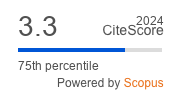Article | Open Access
From Christian Mission to Transnational Connections: Religious and Social Mobilisation among Roma in Finland
| Views: | 3076 | | | Downloads: | 1490 |
Abstract: Based on the analysis of archival material, and combined with ethnographic fieldwork conducted among the Finnish Kaale (the Finnish Romani population) since 2011, this article looks at the historical intertwining of Roma religious and social activism in Finland from the beginning of the 20th century. A focus is placed on the role of the Gypsy Mission (Mustalaislähetys), nowadays Romani Mission (Romano Missio), in shaping both historical and present-day Roma policy, activism and mobilisation within the country. Founded in 1906, and initially led by non-Roma Evangelicals, its impact has nevertheless moved beyond a strictly Roma-focused/non-Roma-led mission. While rarely mentioned, Kaale were active participants within the organisation, and some of the earliest Roma activists were shaped within its midst. Furthermore, Roma mobilisation in the country continues to have a religious undertone, particularly in the contemporary transnational humanitarian work conducted by Finnish Kaale missionaries among Roma communities in Eastern Europe. Tracing the legacy of present-day religious mobilisation among Roma in Finland, as well as Finnish Roma’s active involvement in shaping Roma-projects elsewhere in Europe, is therefore crucial in revealing not only contrasts in how Roma activism may have manifested during the interwar period in Europe (from political to religious, from Roma-led to Roma-focused) but points to the present-day influence of Evangelical missions in shaping particular visions of the ‘future’ among Roma communities across Europe.
Keywords: Eastern Europe; Evangelical; Finland; religion; Roma
Published:
© Raluca Bianca Roman. This is an open access article distributed under the terms of the Creative Commons Attribution 4.0 license (http://creativecommons.org/licenses/by/4.0), which permits any use, distribution, and reproduction of the work without further permission provided the original author(s) and source are credited.


